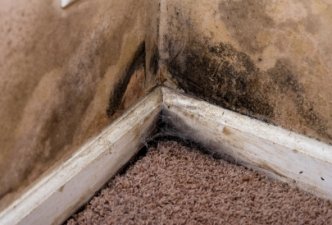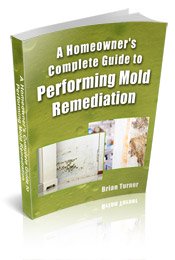Find a Mold Specialist Now
Click or Call, Toll-Free 24/7
How To Kill Mold
People often ask us how to kill mold and ask about the best products to kill mold. People are becoming more and more aware of the health problems caused by mold in the home these days and want to know how they can best take care of the problem.
Killing and Removing Mold
There are more than 100 strains of mold commonly found in American homes and some are more difficult to kill than others. The best products to kill mold may depend on what strain or strains of mold you have (you can have more than one strain growing in your home). Sometimes it also depends on where the mold is growing. Mold growing inside your walls is handled differently than mold growing on your bathroom wall.
Mold that is growing on a hard surface like bathroom tiles or a concrete floor can usually be removed by scrubbing it with one of the many products to kill mold. However, you should know that if there is mold growing on your wall or floor, there is a good chance there is mold growing in other places as well, even if you can’t see it.
When mold grows on a wooden surface, it is more difficult to kill or remove. It can be sanded off, but the surface should still be treated with a disinfectant made to kill mold because mold can seep into the wood and may not all be removed by the sanding. Sanding can also be very dangerous because the mold can become airborne, and should only be done by trained mold remediation professionals.
When mold grows on or in very soft or porous surfaces like carpet or the insulation in your walls, it’s often impossible to remove. You can treat the material with one of the products to kill mold, which may or may not work, but dead mold spores can still cause health problems just like live mold spores can.

How to Kill Mold Safely
Some people think removing mold from their bathroom tile is just like cleaning soap scum from the bathroom tile, but it’s not. Mold spores tend to drift into the air when you scrub them, while soap scum does not. Inhaling mold spores leads to numerous health problems, especially some strains of mold, but soap scum does not. Some people prefer to wear rubber gloves when cleaning to protect their hands from harsh cleaning products or to avoid touching very dirty surfaces, and you should wear rubber gloves when attempting to remove mold, but additional safety measures are required.
In addition to wearing rubber gloves, when dealing with mold you should wear a disposable hair cover and disposable shoe covers. You should also wear a face mask so you do not inhale any mold spores. It’s also important to wash your clothes as soon as you’re done with the job.
Many people prefer to hire a professional to handle a mold problem in the home because professionals know how to kill mold safely and have all the necessary safety equipment. They also know the best products to kill mold.
Professionals That Know How to Kill Mold
Many mold removal professionals have special training in the field. Some are actually engineers. Some professionals are certified in mold removal by one or more organizations that specialize in the field. However, you should know that professionals are not required to be certified or have a degree in engineering. If you wish to hire a professional to address a mold problem in your home, ask about his or her qualifications first. You can also ask for references so that you can speak to prior customers to make sure they were satisfied with the work they had done.
Most mold removal professionals offer free consultations, so you can meet with a professional and get a free assessment of your situation. Even if you choose not to hire a professional, you can get some valuable free advice during your consultation. For instance, a professional can apprise you of the safety risks involved with removing mold from you home and offer some safety tips to help you manage the job without exposing yourself to health hazards. To find a qualified mold removal professional near you, click here.
Return From How To Kill Mold To Our Main How To Remove Mold Page
Black Mold Health Symptoms Home Page





